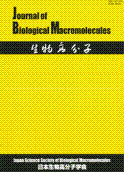Mulberry fruit is thought as a healthy sweetener because it contains iminosugars, such as 1-deoxynojirimycin (1-DNJ), fagomine and 2-O-α-D-galactopyranosyl deoxynojirimycin (GAL-DNJ), that inhibits α-glucosidase. In this study, we quantified iminosugars and glucose concentrations in Morus australis fruit foods and analyzed their inhibitory effects against the activities of α-glucosidase-related four enzymes, maltase, glucoamylase, sucrase, and isomaltase. By LC-MS/MS, the concentrations of 1-DNJ, fagomine, and GAL-DNJ of the M. australis fruit wine, juice, vinegar drink, vinegar, and jam were 1.76–32.5, 0.058–0.290, and 30.2–209 μg/mL, respectively. By high-performance anion-exchange chromatography with pulsed amperometric detection (HPAE-PAD), the glucose concentrations were 0 mg/mL for wine and 13.9–39.7 mg/mL for juice, vinegar drink, vinegar, and jam. The IC50 values of these five foods were 1.9–4.4 % v/v for maltase, 0.37-5.0 % for glucoamylase, and 0.28–1.2 % for sucrase, and 2.0% for isomaltase. Considering the 1-DNJ and glucose concentrations in these five M. australis fruit foods and the IC50 values of 1-DNJ and glucose for α-glucosidase, it was suggested that 1-DNJ is a main inhibitor for α-glucosidase in these foods, and glucose is involved in the inhibition except for wine.
View full abstract
